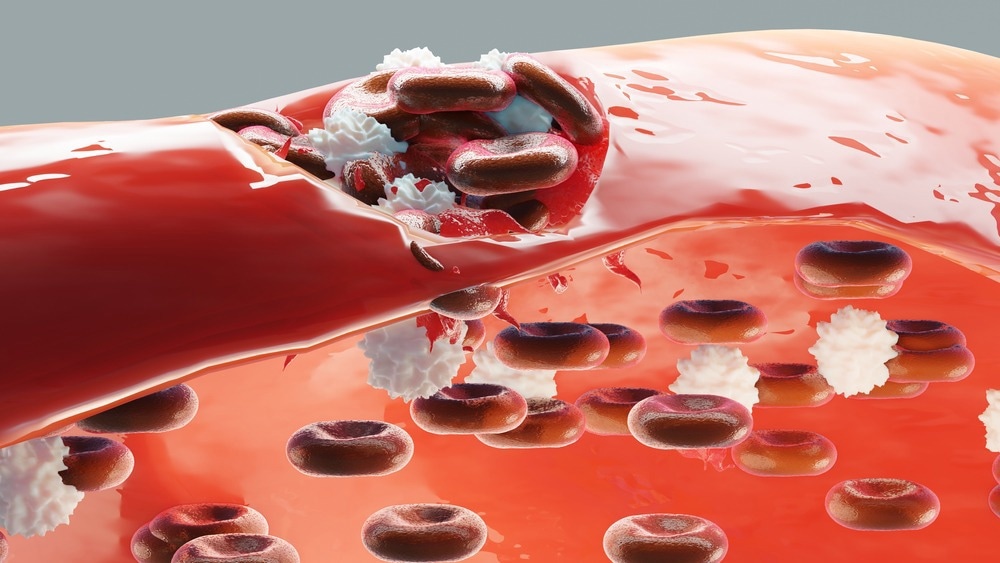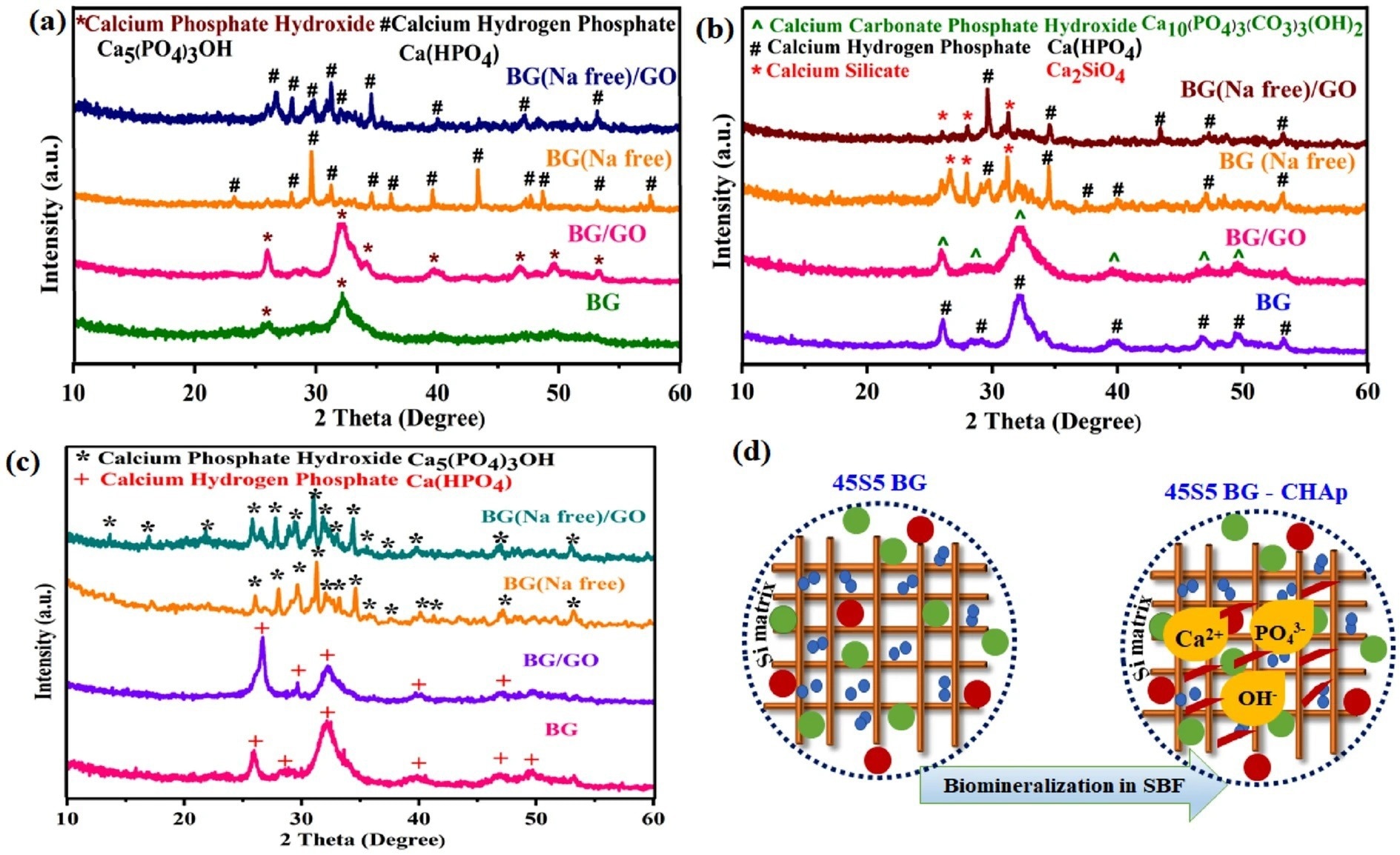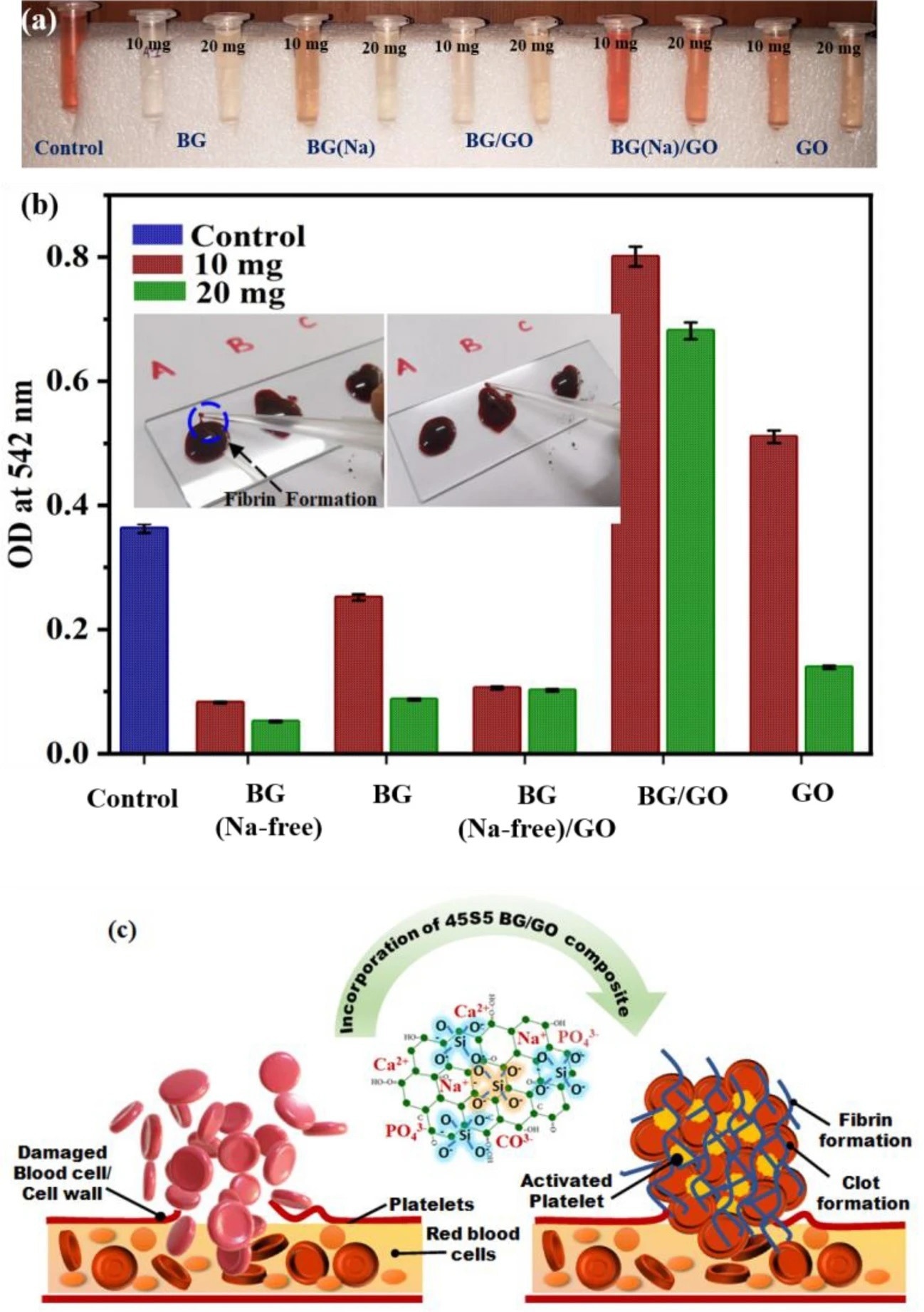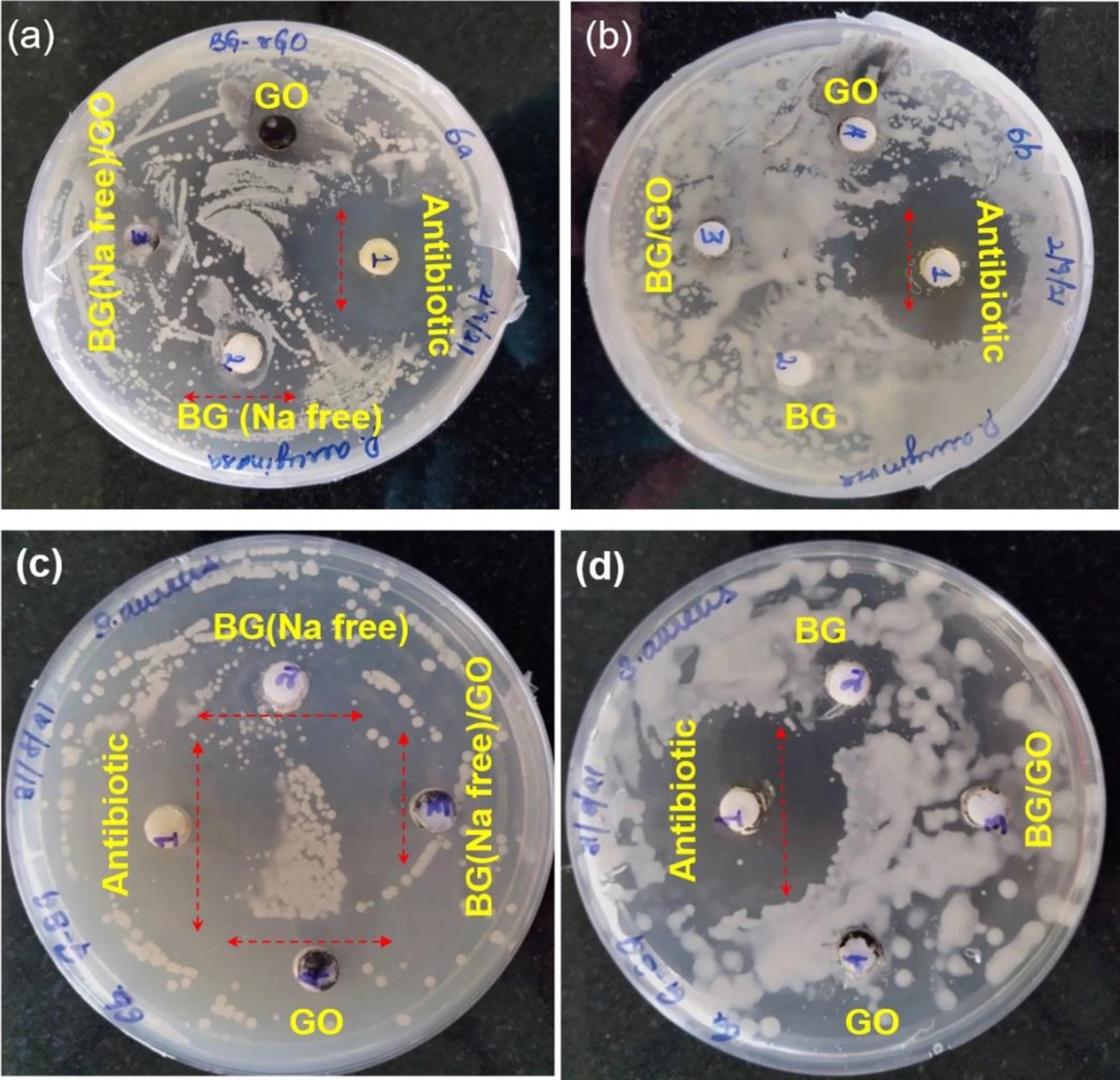Wound healing is a complex process that involves multiple cell types and biological pathways. As it is a time-delayed process, dressing materials can protect the wound from external hazards in the interim of the healing process.

Study: An enduring in vitro wound healing phase recipient by bioactive glass-graphene oxide nanocomposites. Image Credit: ALIOUI MA/Shutterstock.com
A wide range of dressing materials that are distinct and serve specific purposes in tissue engineering are commercially available to enhance the wound-healing process.
An article published in Scientific Reports presented the in vitro wound healing efficiency of bioactive glass in the presence and absence of sodium (Na) ions against fibroblast L929 cells. In addition to bioactive glass prepared via the sol-gel method, bioactive glass-graphene oxide (GO) nanocomposites have also been prepared and used in wound-healing studies.

Figure 1. XRD patterns for BG, BG (Na-free), GO and BG/GO, BG (Na-free)/GO nanocomposites after mineralization; (a) 1st day, (b) 14th day, (c) 28th day, and (d) illustration of ion-exchanged CHAp formation.
In the present study, bioactive glass, bioactive glass-GO nanocomposites, their Na-free versions, and pure GO were investigated against fibroblast L929 cells in vitro. The 45S5 bioactive glass nanocomposites showed various wound-healing properties, including 80 % cell viability, 30 % cell proliferation, 25 % cell migration, metabolic activity, and wound contraction.
Additionally, the (2,2-diphenyl-1-picryl-hydrazyl-hydrate) (DPPH) assay on bioactive glass, bioactive glass (Na-free), GO, bioactive glass-GO nanocomposites, and bioactive glass (Na-free)-GO nanocomposites revealed their antioxidant activity with approximately 80 % radical scavenging activity. The overall results showed decreased inflammation at the wound site, validating their anti-inflammatory properties and enhancing their wound healing ability.
Bioactive Glass in Soft Tissue Regeneration
There is immense demand for cost-effective dressing materials for wound healing. Many complicated interactions are involved in wound healing through different phases of the wound healing system. Advanced medical bioengineering has primarily focused on developing wound dressings to prevent scarring and other ramifications.
Chronic wounds are caused by extensive tissue insults or exposure to diseases such as diabetes and malignancies. Vascular endothelial growth factor (VEGF) is key to angiogenesis (the formation of new blood vessels), and patients with chronic diabetic wounds have inadequate levels of VEGF, leading to reduced angiogenesis.
Severe tissue necrosis is another concern in patients with diabetes, making it difficult to treat chronic diabetic wounds. In this regard, an ideal dressing material that is partly hydrophobic or hydrophilic, non-allergic, non-toxic, and antibacterial prevents microbial growth and is desirable for wound healing.
Bioactive glass serves as a promising material for tissue engineering, owing to its controlled degradability and capability to stimulate new tissue formation. The superior properties of bioactive glass coincide with those of an ideal dressing material for wound healing, garnering its significant importance in soft tissue regeneration.
The three-dimensional (3D) matrix structure, the superior activity of bioactive glass under physiological conditions, and the ability to produce hydroxyl carbonate apatite (HCA) layers on soft tissue are the primary advantages of bioactive glass in soft tissue engineering. The essential properties of bioactive glass, including osteogenesis, angiogenesis, proliferation, and biocompatibility, increase its employability in soft tissue wound healing.

Figure 2. Hemoclot Assay of BG, BG (Na-free), GO and BG/GO, BG (Na-free)/GO nanocomposites; (a) photographs of supernatant collected, (b) optical density (O.D.) representation of hemoclot for 10 and 20 mg samples, and photographs of a blood clot with fibrin formation (inset), (c) schematic representation of hemostatic behavior of 45S5 BG-GO Nanocomposite.
In Vitro Wound Healing Phase Recipient by Bioactive Glass and Its Nanocomposites
In this study, biological, physicochemical, and analytical techniques were employed to evaluate the wound healing ability of bioactive glass, GO, and their nanocomposites by using them as primary dressing materials for healing diabetic and chronic wounds.
The in vitro wound healing test revealed that a higher concentration of bioactive glass and bioactive glass (Na-free) improved wound closure compared to pure GO, bioactive glass (Na-free)-GO nanocomposites, and bioactive glass-GO nanocomposites because GO nanosheets hindered cell growth.
This study also focused on the role of Na in governing the wound healing characteristics of bioactive glass. The experimental results revealed that the presence of Na ions in the bioactive glass matrix could be beneficial for enhancing wound healing qualities, such as hemostasis. However, previous reports have mentioned that Na could easily leak out of the bioactive glass matrix.
Moreover, the DPPH assay revealed a scavenging performance of 80% for bioactive glass (Na-free), 60% for bioactive glass, 65% for bioactive glass (Na-free)-GO, 80% for bioactive glass-GO, and 70% for GO at a concentration of 70 milligrams per milliliter.
The present study is the first to demonstrate bioactive glass's in vitro wound-healing ability with and without Na ions, which exhibited scavenging and anti-inflammatory activities at lower concentrations.

Figure 3. Photographs of antibacterial activity with (a) BG (Na-free), GO and BG (Na-free)/GO nanocomposite against P. aeruginosa, (b) BG and BG/GO nanocomposite against P. aeruginosa, (c) BG (Na-free), GO, and BG (Na-free)/GO nanocomposite against S. aureus, (d) BG and BG/GO nanocomposite against S. aureus.
Conclusion
In summary, bioactive glass, bioactive glass (Na-free), GO, bioactive glass-GO nanocomposites, and bioactive glass (Na-free)-GO nanocomposites have been extensively investigated to evaluate their in vitro biological efficiency. The overall results revealed that 45S5 bioactive glass and GO nanocomposites are promising materials for early-stage chronic and diabetic wound healing.
Furthermore, the authors envisaged using the proposed nanocomposites of this study to fabricate wound healing badges, pads, or sheets as wound dressing products with in vivo models.
Reference
Nandhakumar, M., Thangaian, D.T., Sundaram, S., Roy, A., Subramanian, B. (2022). An enduring in vitro wound healing phase recipient by bioactive glass-graphene oxide nanocomposites. Scientific Reports. https://doi.org/10.1038/s41598-022-20575-z
Disclaimer: The views expressed here are those of the author expressed in their private capacity and do not necessarily represent the views of AZoM.com Limited T/A AZoNetwork the owner and operator of this website. This disclaimer forms part of the Terms and conditions of use of this website.